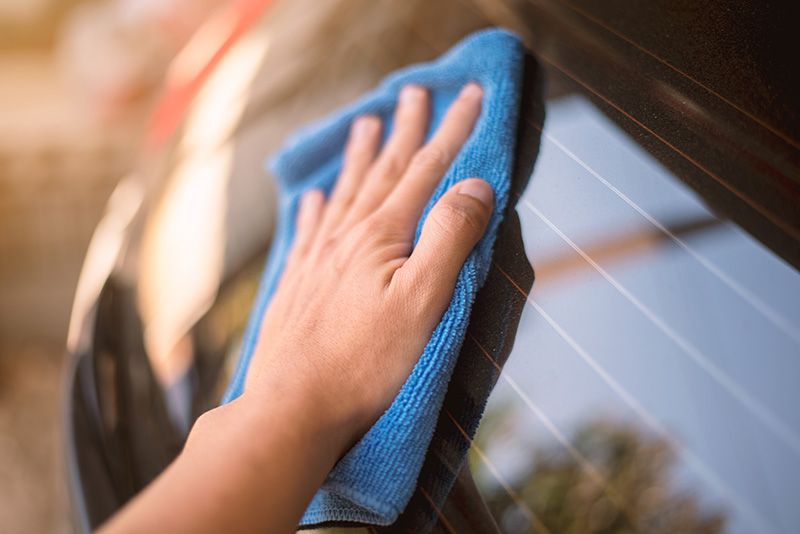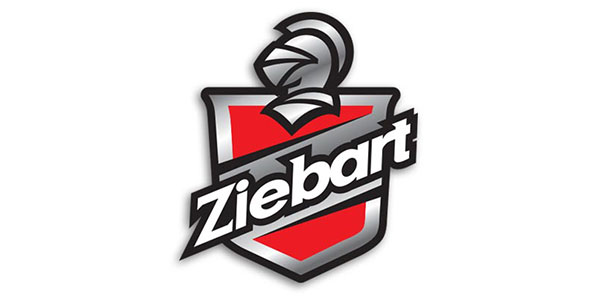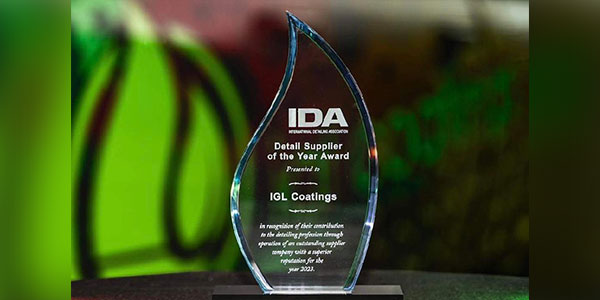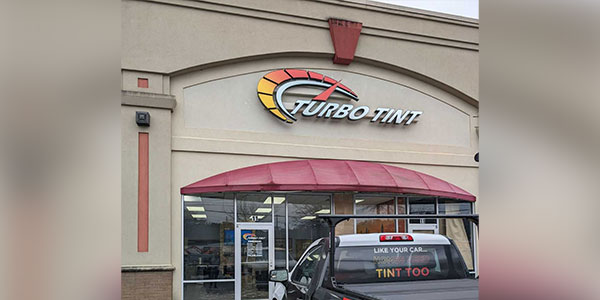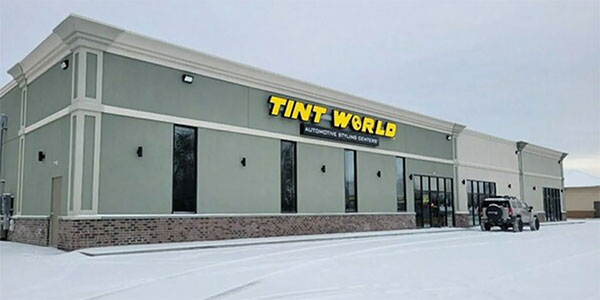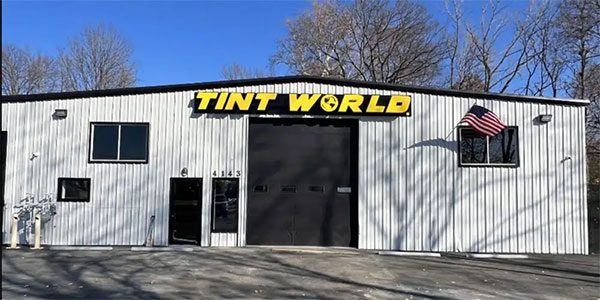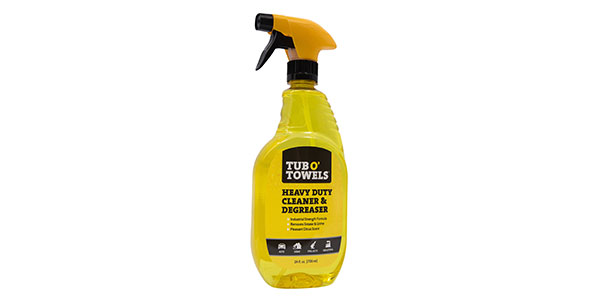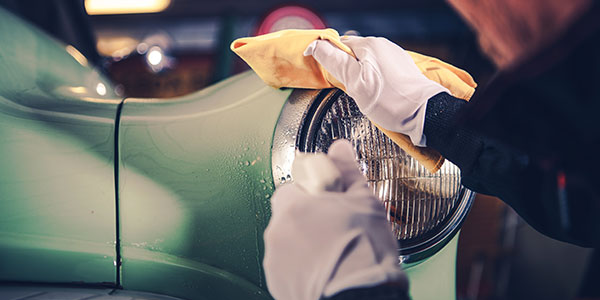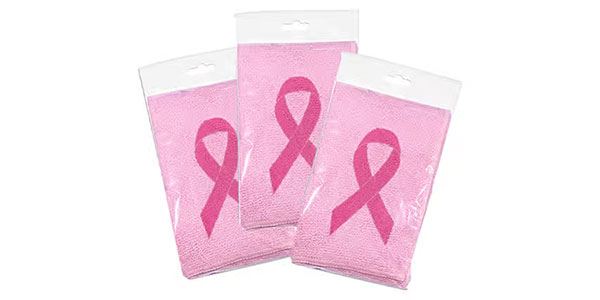Customers not only hate dirty windows — they hate streaky windows too. There’s an art to getting a clean, streak-free shine that doesn’t impede a driver’s vision. But for that, you need the proper tools. What type of towel is best to use? Which sorts of chemicals work best? Is there a specific toweling method for best results? In this article, we’ll get a clearer picture on proper glass cleaning.
Step one: Select your towel
The most important quality of a towel you use for window cleaning is that it must be lint-free. This narrows down your options to huck (surgical) towels or the even more popular microfiber towel. However, even traditional microfiber towels are not perfect for cleaning windows.
“The best type of towel to use for cleaning any of the car would be a microfiber towel because of its absorbency and softness. However, traditional microfiber towels will often leave a streak on the windows because they are so absorbent and have a polyester component to them,” explains Matthew Anderson, vice president and co-owner of Petra Vehicle Care.
With this in mind — along with the fact that even traditional microfiber can leave lint — there are even more specific types of microfiber towels that experts recommend using. For instance, Anderson goes on to recommend using a closed-loop microfiber towel, which he explains is not quite as fluffy as traditional microfiber and is best for drying glass surfaces because it removes any streaking.
Juliette Silver, CEO of Panaram International/Carwash World, recommends using waffle-weave microfiber towels — with a caveat.
“I suggest … waffle weave microfiber towels to be used slightly damp, not dry. This towel will clean and buff the glass to a high shine. The waffle weave towel was designed with two functions: to absorb and to shine. The towels have square grooves on their surface to retain more water than a traditional terry towel. This will reduce streaking and allow quick buffing to produce perfect windows every time.”
Related: Choosing the right towel for the job
Step two: Choose your chemical(s)
If you have a full service carwash, chances are you have a tunnel that will take care of washing the exterior of the car, windows included. While these chemicals will clean the windows well enough, they’re really meant for the body of a car. To that end, Silver adds, it’s necessary to further clean and buff windows to rid them of any chemical residue from the carwash. The chemicals you use are just as important as your equipment, and not all glass cleaners are universal.
According to Anderson, “Most of [the automotive glass-cleaning chemicals] are going to use an isopropyl alcohol-based product, a vinegar-based product, and they’re going to avoid using an ammonium-based product, like you would find in a Windex. Not that Windex is not a good glass cleaner, but it’s not safe for all the tinted windows and screens and navigation areas, so the full service carwashes are going to want to use a more gentle product that can be used on all of the different glasses.”
Another chemical you might consider using is a water repellent, since it enhances driver safety. While these can come separately, they can also come combined with a cleaner, notes Jon King, national product manager with Stoner Car Care. “[There is] a two-in-one product … which leaves a water repellent layer on the windshield as it cleans the glass,” King explains. “[Water repellents] can be applied at any time and aid in removing water from the windshield to make wipers more effective.”
In addition to different types of chemicals, there are also two directions you can take when applying chemical to glass. The first and most traditional method is simply by spraying it on.
However, the second way you can apply chemicals is by first having them injected directly onto the towels themselves. According to Silver, there is a patented formula and technique where hot window cleaner is injected onto microfiber towels during the wash cycle of a type of washer extractor.
“The towels are saturated with the window cleaner and ready for use on the windows. By doing this, you can eliminate costly trigger bottles or aerosol cans, which often do get left in the cars,” Silver notes. “With this method, only six ounces of window cleaner can be used for 120 cars.”
Step three: Utilize proper technique
First, make sure to designate only certain towels as window cleaning towels. Do not use the same towel to clean/dry any other parts of the car and the windows; otherwise, you will leave a film on the window. The best way to avoid this error is to color-code your towels.
The second step to proper window cleaning technique is to use two towels: one to clean the glass and one to dry/buff it.
Next, each towel should be folded twice so that there are eight possible sides to use. You will want to use a fresh side on each window.
Then, apply chemical to the window and use one side of your cleaning towel to distribute it across the glass. Be sure to use straight motions — either up and down or side to side. Also, clean the middle of the glass first and then move to the corners, since they contain the most dirt, which you do not want to smear across the center of the glass.
Then, use one side of your drying towel to remove any remaining chemical residue. You will want to run your towel off the glass, sliding it over the edges, because wherever the towel stops, that’s where residue or streaking will stay.
Finally, remember to flip your towels to a new side when you begin the next window.
King adds that, for corners, which are often difficult to clean, there are special tools available to help. “For hard-to-reach glass, such as the lower interior part of a large windshield, we recommend [a] tool whose floating, triangular head can clean hard-to-reach areas.”
Another best practice to note is that, just as you should use separate towels for the windows, you must also launder these towels separately from car body towels.
On that note, King offers special instructions for the laundering process. “We recommend laundering glass cleaning towels in detergents which are free of dyes and fragrances, no fabric softeners and no dryer sheets,” he says.
Providing towels for customer use
So far, we have only covered the professional use of window cleaning with towels. However, the express exterior segment, a substantial part of the industry’s makeup, does not usually offer hand wash services for windows. So, how can you make sure that this customer base is as satisfied with their windows as those with full-serve and detailing operations?
As mentioned previously, tunnel equipment sprays the same chemicals onto the windows as onto the rest of the vehicle. While this can clean the exterior of the windows well enough for an express service, it should be noted that, no matter how good your dryers or their configuration are, cars never come out 100 percent dry. Customers are picky about their windows, and leaving wet spots on the windows, even if you do use a spot-free rinse, will act as a point against you.
While some customers may have the foresight to bring their own microfiber towels to the wash to dry off their windows in the vacuum bays, what about the impulse buyers that you managed to snag off the street?
For the sake of customer satisfaction, it would behoove carwash operators to, at the very least, provide a towel station or exchange program, where customers can borrow towels at the wash to wipe down their windows and then put them back to be washed (or, as per the exchange program, purchase a towel for use, which can be exchanged for a clean one on the next visit).
Another option would be to distribute disposable glass wipes with your washes, which Anderson says are the second-best option after using a towel to clean and dry windows.
Certain glass wipes, Anderson notes, use an isopropyl-alcohol substrate, which is safe to use on all tinted windows, mirrors and instrument panels. Furthermore, some of these wipes are created from a durable, non-woven material that allow them to apply the glass cleaning solution early and quickly, and then they begin to dry. Afterwards, you use the drying cloth to get out any of the streaks.
“All glass wipes will leave streaks [on the glass], unless the glass is wiped completely dry,” Anderson warns. “So, that’s a mistake that a lot of people do. They’ll buy Windex wipes … and they’ll get frustrated because they’re like, ‘Oh, well, it leaves streaks,’ but it’s because they’re not using the product correctly.”
Remember, your customers spend most of their time inside a vehicle, looking through the windows. If streaks and dirt obstruct their vision, they’ll become frustrated, and for that reason alone, it’s important to get windows as clean as possible.
“When a customer leaves the carwash, they do not remember the body of the car, but they do remember if the windows were streaky or not clean and shiny. They may never come back again. If you produce perfect windows, you will have a customer for life,” Silver concludes.

